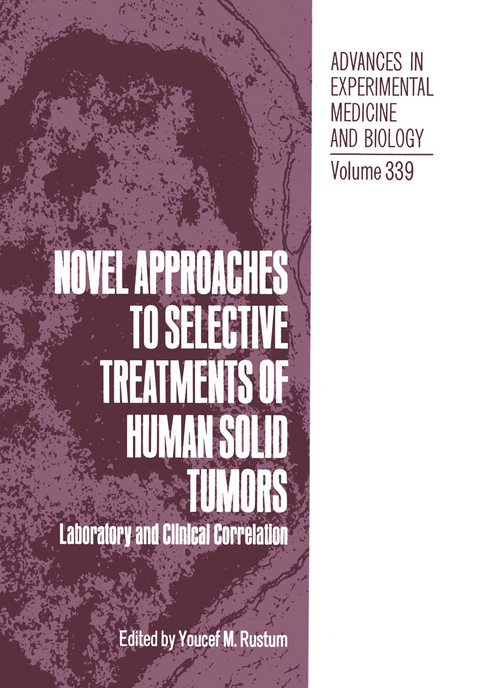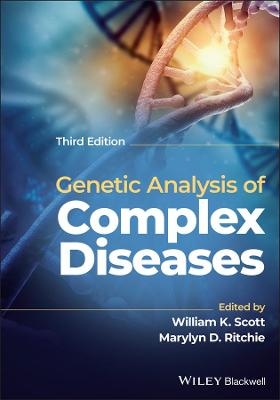
Novel Approaches to Selective Treatments of Human Solid Tumors
Springer-Verlag New York Inc.
978-1-4613-6060-5 (ISBN)
Although the extent of metabolism of folates in normal and tumor tissues has not been clearly delineated, it has been determined that the formation of folypolyglutamates is primarily a function of schedule of CF administration, while the retention of significant concentrations of reduced folate is a function of the dose and also the schedule of LV. Thus, it appears that for optimal modulation of FUra activity several factors must be considered simultaneously.
Fluoropyrimidine Metabolism and Mechanism of Action.- 5-Fluoro-2?-Deoxyuridine: Role of Schedule in its Therapeutic Efficacy.- Comparison of Continuous Infusions and Bolus Injections of 5- Fluorouracil with or without Leucovorin: Implications for Inhibition of Thymidylate Synthase.- Critical Questions for the Future Direction of FU/LV.- Cellular Interactions Between the Natural and Unnatural Isomers of 5-Formyltetrahydrofolate.- Leucovorin as a Prodrug.- Clinical Use of Leucovorin: Intracellular Metabolism.- Some Considerations Concerning the Dose and Schedule of 5FU and Leucovorin: Toxicities of Two Dose Schedules from the Intergroup Colon Adjuvant Trial (INT-0089).- Effects of 5-Fluorouracil on mRNA.- Genetic Variation in Thymidylate Synthase Confers Resistance to 5-Fluorodeoxyuridine.- Experience with 5FU + L-Leucovorin.- 5-Fluorouracil Combined with the Pure [6S]-Stereoisomer of Folinic Acid in High Doses for Treatment of Patients with Advanced Colorectal Carcinoma: A Phase I-II Study of Two Consecutive Regimens.- 5-Fluorouracil Modulation in Colorectal Carcinoma: Experience of German Investigators.- An Overview of Adjuvant Treatment of Colon Cancer.- Dose-Dependent Inhibition of Aspartate Carbamoyltransferase in Peripheral Blood Mononuclear Cells in Patients Receiving N-Phosphonacetyl)-L-Aspartate.- Alternative Approaches to Modulation of Fluoropyrimidines.- Increasing the Efficacy of 5-Fluorouracil with Interferons: Preclinical, Clinical, and Pharmacokinetic Studies.- Enchanced Cytotoxicity of 5-Fluorouracil Combined with [6RS]-Leucovorin and Recombinant Human Interferon-?2a in Colon Carcinoma Cells.- Regulation of Thymidylate Synthase in Human Colon Cancer Cells Treated with 5-Fluorouracil and Interferon-Gamma.- Biochemical Modulation of 5-Fluorouracil byPALA: Mechanism of Action.- Implications of Chronobiology for 5-Fluorouracil (5-FU) Efficacy.- Update on Metabolic Modulation as a Therapeutic Approach for Adult Carcinomas.- Fluorouracil and Leucovorin in Advanced Breast Cancer.- Fluorouracil Modulation in Head and Neck Cancer.- Biomodulation in Head and Neck Carcinomas: Therapeutic Approaches in Europe.- Rationale for the Combination Therapy of 5FU and CDDP.- Biochemical Modulation of Fluoropyrimidines: The “Giscad” Studies.- New Drugs.- Clinical Experience with UFT in Japan.- Clinical Studies of the Modulation of Ftorafur.- The Role of the Reduced-Folate Carrier and Metabolism to Intracellular Polyglutamates for the Activity of ICI D1694.- The History of the Development and Clinical Use of CB 3717 and ICI D1694.- New Sites of Intervention in the Development of New Drugs in Solid Tumors.- P53: A Determinant of the Cell Cycle Response to DNA Damage.- Therapeutic Implications of Molecular Genetics.- Concluding Remarks.- Summary.- Abbreviations.- Author Index.
| Reihe/Serie | Advances in Experimental Medicine and Biology ; 339 |
|---|---|
| Zusatzinfo | XII, 319 p. |
| Verlagsort | New York, NY |
| Sprache | englisch |
| Maße | 178 x 254 mm |
| Themenwelt | Medizin / Pharmazie ► Medizinische Fachgebiete ► Onkologie |
| Medizin / Pharmazie ► Medizinische Fachgebiete ► Pharmakologie / Pharmakotherapie | |
| Studium ► 2. Studienabschnitt (Klinik) ► Humangenetik | |
| Naturwissenschaften ► Biologie ► Botanik | |
| Naturwissenschaften ► Biologie ► Zoologie | |
| ISBN-10 | 1-4613-6060-9 / 1461360609 |
| ISBN-13 | 978-1-4613-6060-5 / 9781461360605 |
| Zustand | Neuware |
| Haben Sie eine Frage zum Produkt? |
aus dem Bereich


